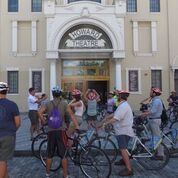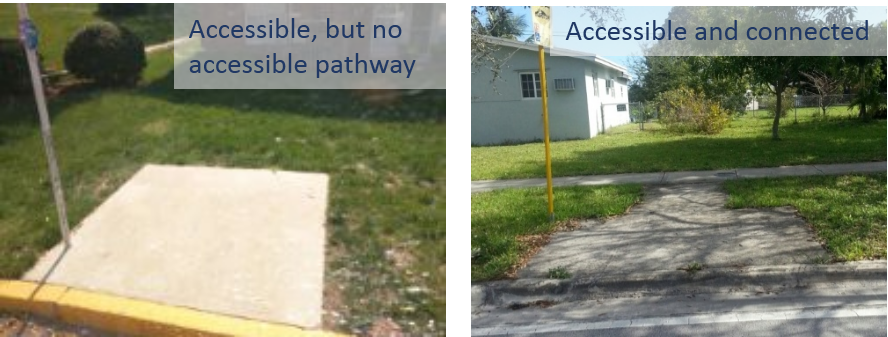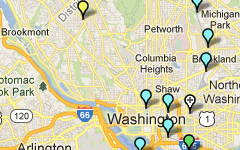Biking and SafeTrack – Highlighting the Need for Bike Infrastructure
Transit and bikes go hand in hand. Not only can riders bike to and from stations for that first and last mile, but biking is a great way to get around when Metrorail is under maintenance. It’s important that our policy makers understand the importance of having good bike infrastructure.
On Sunday, September 18th, I rode around DC with a bunch of planners from across the country in town for the American Planning Association’s (APA) annual Policy and Advocacy Conference. This annual conference gears planners up to advocate for federal, state and local policies that advance good planning principles through the legislative process. There are two days of training workshops and speaker sessions and an entire day of meetings on Capitol Hill, where planners meet with their representatives to discuss planning issues and their importance to creating strong communities.
One of the training sessions sponsored by the APA Virginia Young Planners Group (YPG) was a mobile workshop on bicycle infrastructure planning and the role of the bicycle as a viable transportation option. I was there as a speaker to provide some background about bicycling as an alternative for riders trying to get around during our SafeTrack rebuilding program. Two other speakers very familiar with the biking world here in DC were on the tour as well – Jim Sebastian, who manages DDOT’s Active Transportation Branch and is their chief bike planner responsible for most of the DC bicycling infrastructure that has come on-line in the last decade and helped make DC #4 in the country for bike commuting, and Doug Smith, WABA’s Everyday Bicycling Coordinator. Read more…




Recent Comments